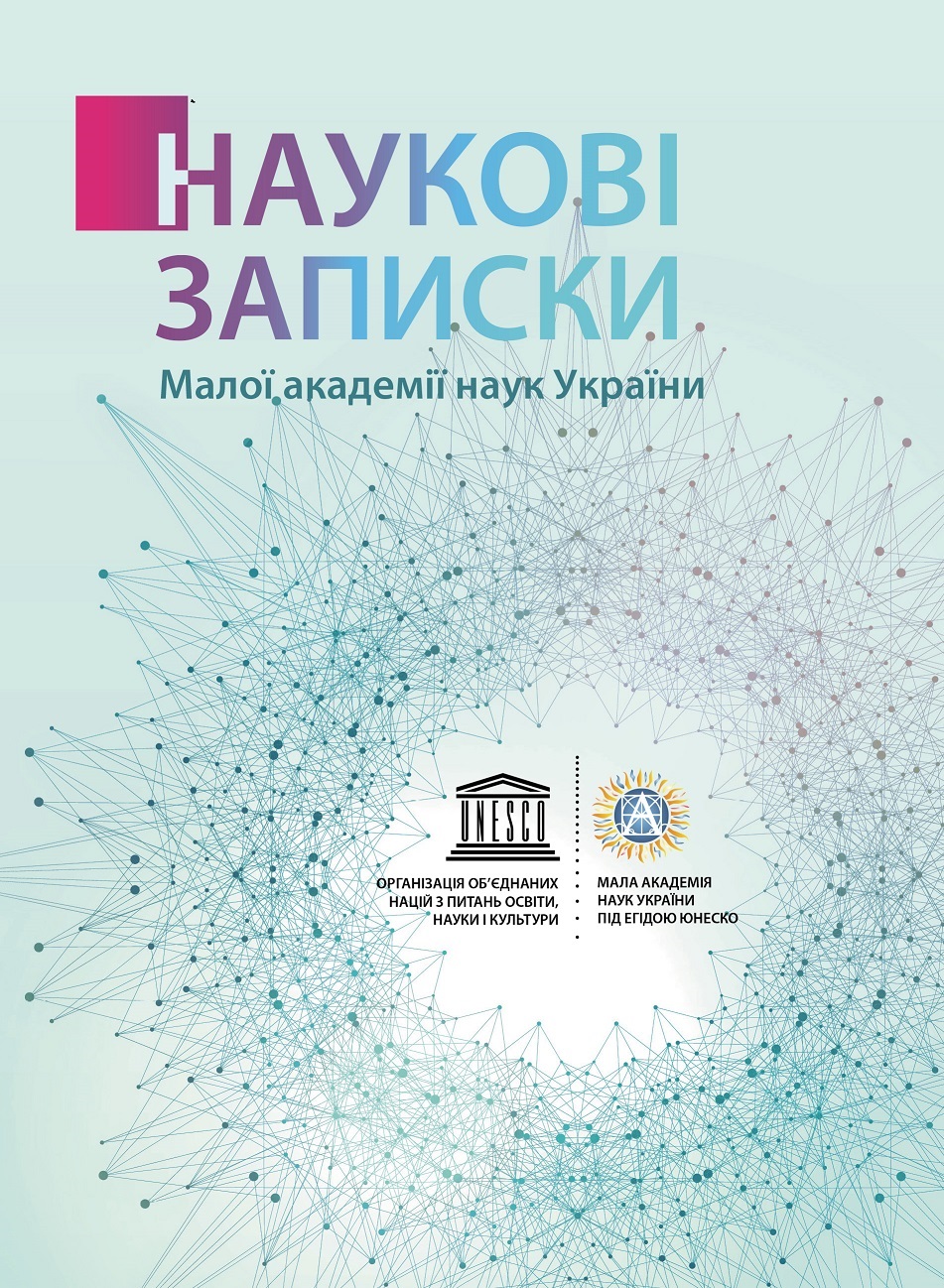PHILOSOPHICAL AND PEDAGOGICAL FUNDAMENTALS OF THE CREATION OF THE MUSEUM OF SCIENCE OF THE JUNIOR ACADEMY OF SCIENCES OF UKRAINE
DOI:
https://doi.org/10.51707/2618-0529-2020-19-11Keywords:
philosophical and pedagogical principles, Museum of Science of the Junior Academy of Sciences of Ukraine, gifted youth, scientific education, interactive scientific space, popularization of scientific knowledgeAbstract
The article presents the philosophical and pedagogical principles of creating a science museum for young students in the context of the development of scientific education. The global and conceptual transformations in public life over the last 20 years, which contribute to the change of approaches to the development of scientific education both in the world and in the country, are analyzed. The experience of high-tech countries of the world on the education of a new generation of researchers and a role in this process of interactive scientific spaces, possibilities of use of the potential of museums for the realization of educational and scientific programs is revealed. The peculiarities of fundamentally new approaches to the organization of museum spaces for young researchers, which form a research search approach, stimulate the creativity of gifted students in contrast to the reproductive acquisition of knowledge, are considered. The importance of new approaches and methods of museum pedagogy in modern conditions, in accordance with changes in education, psychology of modern students, the requirements of the new Ukrainian school to the level of knowledge of students and competencies of teachers. It is established that in the modern conditions of high-tech society, interactive scientific spaces should become centers of popularization of science, creative coworking spaces of communication for teachers-researchers and playgrounds-experiments for children. It is noted that the philosophical and pedagogical principles for the creation of the Museum of Science of the Academy of Sciences are increasingly relevant in the context of the development of scientific education, education of innovative, creative personality and should be based on general philosophical and cultural values.
References
How clip thinking cripples children. Retrieved from : http://tvchirkey.ru/yak-klipove-mislennya-kalichit- ditej. php [in Ukrainian].
Lisovyi, O. V., Savchenko, I. M., Khrapach, H. S. (2019). Estonian Maritime Museum “LENNUSADAM” as an example of a modern interactive museum of science for the development of research competencies and creativity of a new generation of young inventors. Osvita ta rozvytok obdarovanoi osobystosti, 4 (75). Kyiv. Retrieved from : http://otr.iod.gov.ua/images/pdf/2019/4/8.pdf [in Ukrainian].
Andrushchenkо, V., Peredborskа, I. (2009). Philosophy of education. Kyiv : Vyd-vo NPU imeni M. P. Drahomanova. Retrieved from : http://enpuir.npu.edu.ua/bitstream/123456789/4052/1/Philosophy%20of%20Education.pdf [in Ukrainian].
Lisovyi, O. V. Savchenko, I. M., Savchenko, Ya. V. (2018). The concept of creating a living space of a new generation (scientific and innovative complex). Rozbudova yedynoho informatsiinoho prostoru ukrainskoi osvity – vymoha chasu : zb. mater. vseukr. nauk.-prakt. WEB-forumu (Kyiv – Kharkiv, 22–23 bereznia 2018 r.). Kropyvnytskyi : Vyd-vo LA NAU, 15-19 [in Ukrainian].
Savchenko, Ya. V. (2019). The first interactive museums of science and technology for young people: a retrospective aspect. Naukovi zapysky Maloi akademii nauk Ukrainy. Seriia “Pedahohichni nauky” : zb. nauk. pr. Kyiv : Natsionalnyi tsentr “Mala akademiia nauk Ukrainy”, 14, 125–132 [in Ukrainian].
Savchenko, Ya. (2019). Jacob Perelman Museum of Interesting Science: a retrospective aspect. Innovatsiini transformatsii v suchasnii osviti: vyklyky, realii, stratehii : zbirnyk materialiv Pershoho Vseukrainskoho vidkrytoho naukovo-praktychnoho forumu. Kyiv : Natsionalnyi tsentr “Mala akademiia nauk Ukrainy”, 83–85 [in Ukrainian].
Connors Betsy (1998). Lightforest and the MIT Museum Holography Education Project. Retrieved from : https://www.spiedigitallibrary.org/conference-proceedings-of-spie/3358/0000/Lightforestand-the-MIT-Museum-Holography-Education-Project/10.1117/12.301469.full [in English]. DOI: 10.1117/12.301469
Karen A. Rader, Victoria E. M. Cain (2008). From natural history to science: display and the transformation of American museums of science and nature. Leicester, Volume 6, No 2. Retrieved from : https://www108.lamp.le.ac.uk/ojs1/index.php/mas/article/view/120 [in English].
“About the statement of the Standard of specialized education of a scientific direction”. Retrieved from : https://mon.gov.ua/ua/npa/pro-zatverdzhennya-standartu-specializovanoyi-osviti-naukovogospryamuvannya [in Ukrainian].
Order of the Cabinet of Ministers of Ukraine of August 5, 2020 № 960-r. “On approval of the Concept of development of natural and mathematical education (STEM-education)”. Retrieved from : https://zakon.rada.gov.ua/laws/show/960-2020-%D1%80#Text [in Ukrainian].
Downloads
Published
How to Cite
Issue
Section
License
Copyright (c) 2021 Scientific nontes of Junior Academy of Sciences of Ukraine

This work is licensed under a Creative Commons Attribution 4.0 International License.













